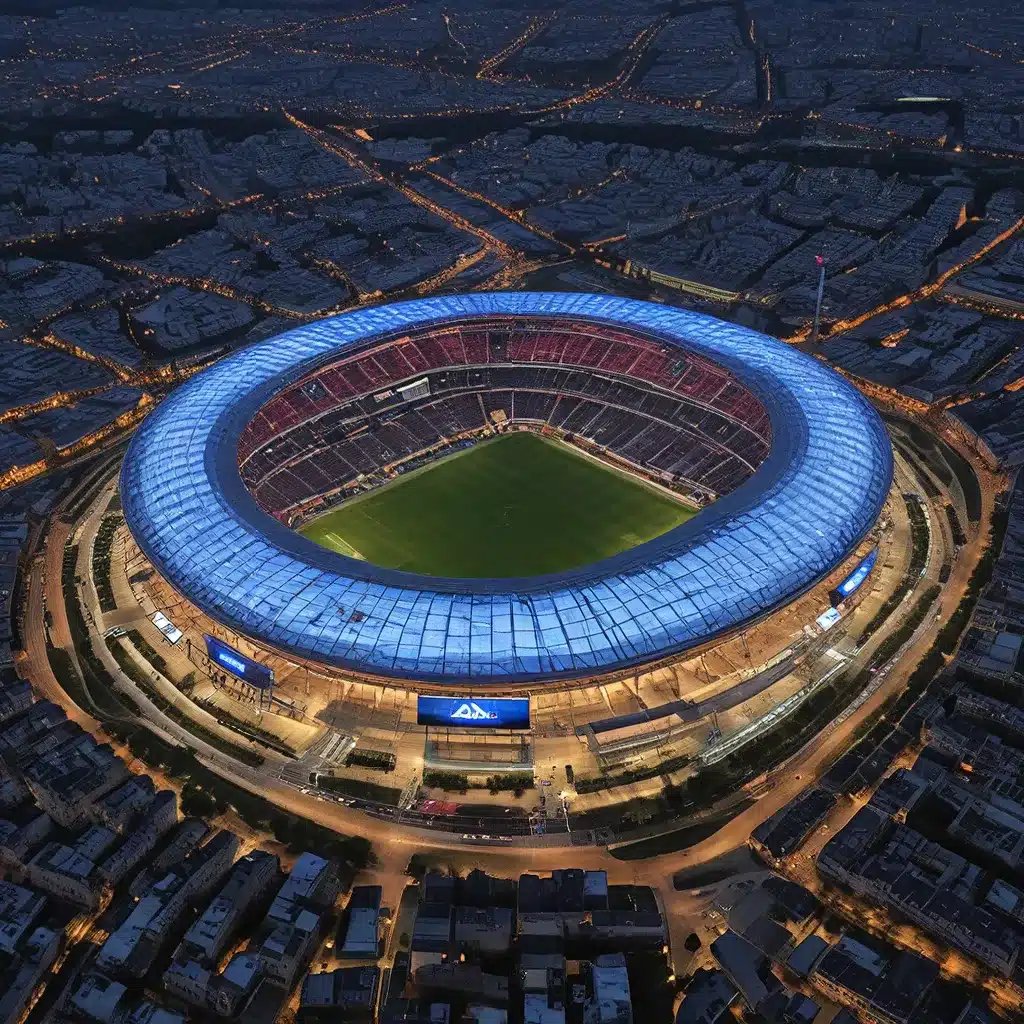
Nestled in the heart of Saint-Denis, a commune just north of Paris, the Stade de France stands as a gleaming symbol of the city’s enduring passion for the beautiful game. Constructed for the 1998 FIFA World Cup, this architectural marvel has since become a hallmark of Parisian sports culture, hosting some of the most electrifying football matches, as well as a variety of other high-profile events.
A Storied History
The Stade de France was conceived as part of France’s successful bid to host the 1998 World Cup, a landmark event that would showcase the nation’s football prowess on the global stage. The stadium’s design, a collaborative effort between architectural firms Macary, Zublena, Regembal and Costantini, sought to create a modern, technologically advanced venue that could accommodate the demands of a world-class sporting event.
Construction on the stadium began in 1995, with the project overseen by the Consortium Stade de France, a public-private partnership between the French government and a consortium of private companies. The design process was not without its challenges, as the architects had to navigate the complexities of building a stadium capable of hosting the world’s largest football tournament while also integrating it seamlessly into the existing urban landscape of Saint-Denis.
Despite these hurdles, the Stade de France emerged as a triumph of modern engineering and architectural design. The stadium’s iconic silhouette, with its distinct asymmetrical roof and sleek, contemporary facade, has become a beloved landmark in the Parisian skyline. As one observer noted, the Stade de France is “the jewel in the crown of all buildings in Qatar”, a testament to the stadium’s enduring architectural significance.
A Versatile Sporting Venue
The Stade de France’s role as a premier sporting venue was firmly cemented during the 1998 World Cup, when it hosted seven matches, including the thrilling final between France and Brazil. The home team’s dramatic 3-0 victory over their South American rivals in front of a capacity crowd of 80,000 fans remains one of the most iconic moments in the stadium’s history, cementing France’s status as a footballing powerhouse.
Since then, the Stade de France has continued to play a central role in the country’s sporting landscape. It has served as the home stadium for the French national football team, hosting crucial qualification matches and international friendlies that have captivated fans across the country. The stadium has also been the site of many high-profile European club competitions, including the UEFA Champions League final in 2000 and 2006.
But the Stade de France’s versatility extends far beyond football. The stadium has played host to a diverse array of sporting events, from rugby union matches to athletic competitions, solidifying its reputation as a multifunctional arena capable of accommodating a wide range of activities.
A Hub for Cultural Events
While the Stade de France’s primary function is as a sports venue, it has also emerged as a vibrant hub for cultural events, further cementing its status as a true centerpiece of Parisian life. The stadium has played host to numerous concerts, with some of the world’s biggest musical acts gracing its stage, including U2, Beyoncé, and Ed Sheeran.
The Stade de France has also been the site of significant political and social events, such as the Paris Peace Forum in 2018, which brought together world leaders to discuss global governance and cooperation. This versatility has helped to position the stadium as a dynamic and inclusive public space, where the people of Paris and beyond can come together to celebrate their shared passions and interests.
A Symbol of Resilience
The Stade de France’s history is not without its challenges, however. In the wake of the tragic terrorist attacks that struck Paris in November 2015, the stadium found itself at the center of a global conversation about the role of sports arenas in the age of heightened security concerns.
The attacks, which occurred during a friendly match between France and Germany at the Stade de France, served as a stark reminder of the vulnerability of such large-scale public events. In the aftermath, the stadium’s operators and security personnel worked tirelessly to implement new measures and protocols to ensure the safety and well-being of all who enter the venue.
Despite these challenges, the Stade de France has emerged as a symbol of resilience, a testament to the enduring power of sport and culture to bring people together and foster a sense of community. As the stadium continues to evolve and adapt to the changing needs of its visitors, it remains a beacon of hope and pride for the people of Paris and the nation as a whole.
Conclusion
The Stade de France is more than just a football stadium; it is a testament to the enduring passion and ingenuity of the French people. From its cutting-edge design to its versatile programming, this architectural marvel has become a beloved landmark and a source of deep civic pride.
As the home of the French national team and a host to some of the world’s most prestigious sporting and cultural events, the Stade de France stands as a gleaming gateway to the rich tapestry of Parisian life. Whether you are a devoted football fan or simply a lover of architectural excellence, a visit to this iconic venue is a must-do for anyone exploring the wonders of the City of Light.
So, if you find yourself in Paris, be sure to plan a visit to the Stade de France and experience firsthand the magic and majesty that have made this stadium a true icon of the city and the world of sports.

